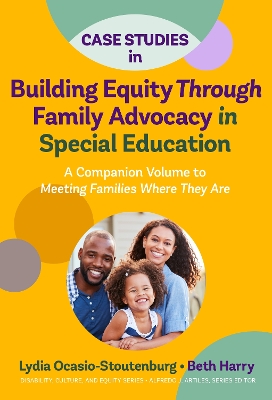Disability, Culture, and Equity
1 total work
Case Studies in Building Equity Through Family Advocacy in Special Education
by Lydia Ocasio-Stoutenburg and Beth Harry
Published 28 May 2021
You've read the history and the background, now meet the families! This companion book to Meeting Families Where They Are traces the advocacy journeys of 12 caregivers across a range of racial, ethnic, social, disability, economic, and family identities. The stories reflect the unique lives, histories, and needs of each family, as well as the different approaches they employ to meet the needs of their children. Caregivers indicate when they began to advocate; describe how they continue their efforts across schools, medical offices, therapies, communities, and virtual spaces; and discuss how they adapt to changing social and health climates and educational delivery modes. They also share their collective wisdom to assist other parents who are new to the advocacy platform or are feeling discouraged with the process. This is must-reading for family members, teachers, administrators, health care personnel, and everyone invested in creating a culture of respect, love, and understanding.
Book Features:
- Emphasizes how families have resisted the deficit-based view of their children while still utilizing systems of support.
- Identifies gaps and challenges across multiple systems, as well as "what's working."
- Incorporates the fields of special education and disability studies in education.
- Uses the framework of DisCrit to explore how disability and other social identities operate in tandem, examining concepts such as power, access, privilege, and barriers.
- Positions caregivers as experts in their children's lives, illustrating how they advocate for their children, teens, and young adults.
- Takes a deep dive into the nuances of generational, cultural, organizational, and geographical factors that impact how caregivers advocate.
- Resists approaches that typically involve professionals dictating what families need, centering instead on a collaborative model that includes families and professionals.
